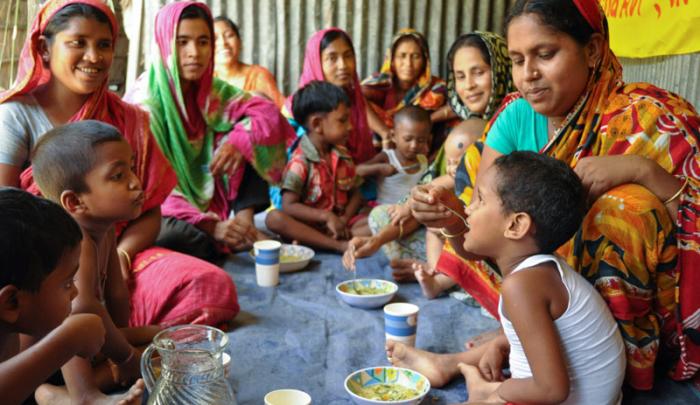Highlights
- World Vision urges improved balance of foreign aid funding
- The Christian charitable organization designates $1.2 billion to combat childhood malnutrition
- Improving child nutrition is a top priority for World Vision

LONDON (June 8, 2013) — World Visionis today announcing a US$1.2 billion package of measures to combat childhood undernutrition, challenging governments — especially those from G8 countries — to match this commitment as they meet in London today.
“An investment in nutrition is a wise investment in our children’s future that not only saves lives but drives economic growth. Without the right nutrition in the first 1,000 days of life, children’s futures are permanently affected. Their brains and muscles fail to develop, leaving them stunted for life, and when children can’t develop, countries can’t develop. Yet very simple cost-effective interventions like adding iodine to the water supply or providing vitamin A supplements can secure a decent future for children,” said Robert Zachritz, senior director of Government Relations and Advocacy at World Vision.
Aimee Manimani of World Vision Democratic Republic of Congo is in London to ensure the message is heard. She said: “I have seen at first-hand what chronic malnutrition does to children, and it is heart-breaking. In the DRC, 43 percent of children under five are stunted through undernutrition, and we believe governments need to do more to tackle this.”
World Vision’s new report, Fragile But Not Helpless, found that security concerns and funding in fragile countries like the DRC are preventing donor countries from supporting enough of the simple nutrition interventions that have been proven to work. The research shows that ending child undernutrition in fragile and conflict-affected states is possible, but for this to become a reality, far greater commitment is needed.
Across the world, significant progress has been made in reducing child mortality; since 1990 the number of children who die before their fifth birthday has nearly halved. But there has been less progress in improving children’s nutrition, and undernutrition is a major contributing factor in the deaths of more than three million children every year. Globally 165 million children, or one in four of all children under five, are stunted; chronically undernourished and at risk of long-lasting damage to their mental and physical development.
Improving child nutrition is a top priority for World Vision. Since 2008, it has been rolling out a package of nutrition and health interventions across its global programming, with $158 million spent on nutrition-focused programming and advocacy in 2012 alone.
– END –
About World Vision:
World Vision is a Christian humanitarian organization conducting relief, development, and advocacy activities in its work with children, families, and their communities in nearly 100 countries to help them reach their full potential by tackling the causes of poverty and injustice. World Vision serves all people regardless of religion, race, ethnicity, or gender. For more information, please visit www.WorldVision.org/media-center/ or on Twitter @WorldVisionUSA.